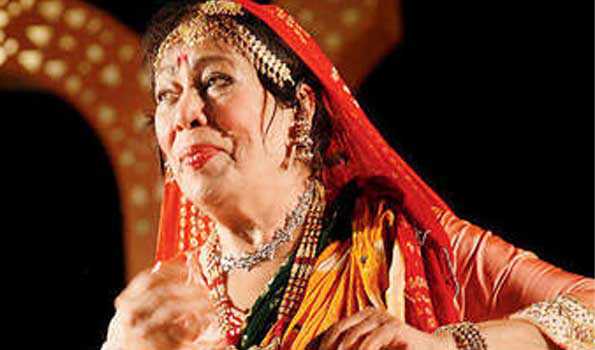New Delhi (UNI):
On Wednesday, Google marked the 97th birth anniversary of eminent Kathak dancer Sitara Devi with a colourful Doodle.
The online search engine paid tribute to the legendary dancer for her vibrant energy, awesome footwork, and exceptional ability to bring a story to life.
Such was Sitara Devi’s passion for Kathak that even at the ripe age of 94 in 2014, she performed “ada” and “tukras” while sitting in a chair at a Haridas Sangeet Sammelan festival. In between her performances, she took a pill for her heart problem all the while coaxing the audience to make demands of her. “It will make me happy if you demand some tukra or ada from me because all I want to do is dance, dance and dance,” she said.
It is no wonder then, that she was anointed “Nritya Samragini” (Empress of Dance) by none other than Gurudev Rabindranath Tagore after he watched her performance when she was just 16.
Sitara Devi’s exquisite footwork is unparalleled and her adas were legendary. She could at once be coquettish as in “sarakti jaye rukh se naqab ahista ahista” and within seconds be an adoring mother in “thumak chalat ramchandra’’.
The danseuse was born on November 8, 1920 in Calcutta (now Kolkata) around Diwali and named “Dhan Lakshmi”. She was fondly called “Dhanno”. But later, as she spread her wings she came to be known as Sitara Devi.
Soon the family moved to Varanasi. Her father, Sukhdev Maharaj, was a Sanskrit scholar and also a Kathak dancer and musician. He is considered a source of the Benares gharana of Kathak. Her mother Matsya Kumari was related to the royal family of Nepal.
Those were the days when dance was not considered respectable and the sound of `ghungroos’ was related to prostitutes. Thus, Sukhdev Maharaj was forced to move out their residence in Kabir Chaura in Varanasi.
However, Sitara Devi’s fame as a Kathak danseuse spread far and wide. When she was just 13, film maker and dance director Narendra Sharma invited her to Bombay (now Mumbai) to perform in a film. Thereafter she performed in several films including Arzoo, Aurat Ka Dil, Nagina, Phool, Hulchul, Roti and Mughl-e-Azam among others.
Sitara Devi’s closeness to the film industry led her into two marriages with film personalities. She married K Azif of Mughl-e-Azam fame and then Pakistani and Indian Film producer and director Nazir Ahmed Khan. Both the marriages ended in separation and Sitara Devi remained married to her art till the end.
She, however, is credited with introducing the famous Benares gharana of Kathak in the Bombay film industry. She trained top heroines of the day including Madhubala, and Mala Sinha in Kathak.
Sitara Devi performed all over the world including at the Royal Albert Hall, London (1967) and the Carnegie Hall, New York (1976) and worked tirelessly to popularise the dance form.
In a career spanning six decades she was bestowed the Sangeet Natak Akademi Award and Padam Shri.
However, in 2002 she turned down Padam Bhushan saying she deserved the Bharat Ratna.
She said she did not grudge the award of Bharat Ratna to artistes like Ustad Bismillah Khan, Lata Mangeshkar and Pandit Ravi Shankar but she felt she deserved it as well.
The legendary artiste lives on in the hearts of her audiences, her numerous disciples and through her talented daughter Jayantimala Rishika, also a Kathak dancer.
Sitara Devi passed away on November 25, 2014.
UNI GP RSA 1544
source: http://www.uniindia.com / United News of India / Home> Features / by Gargi Parsai / November 13th, 2017
